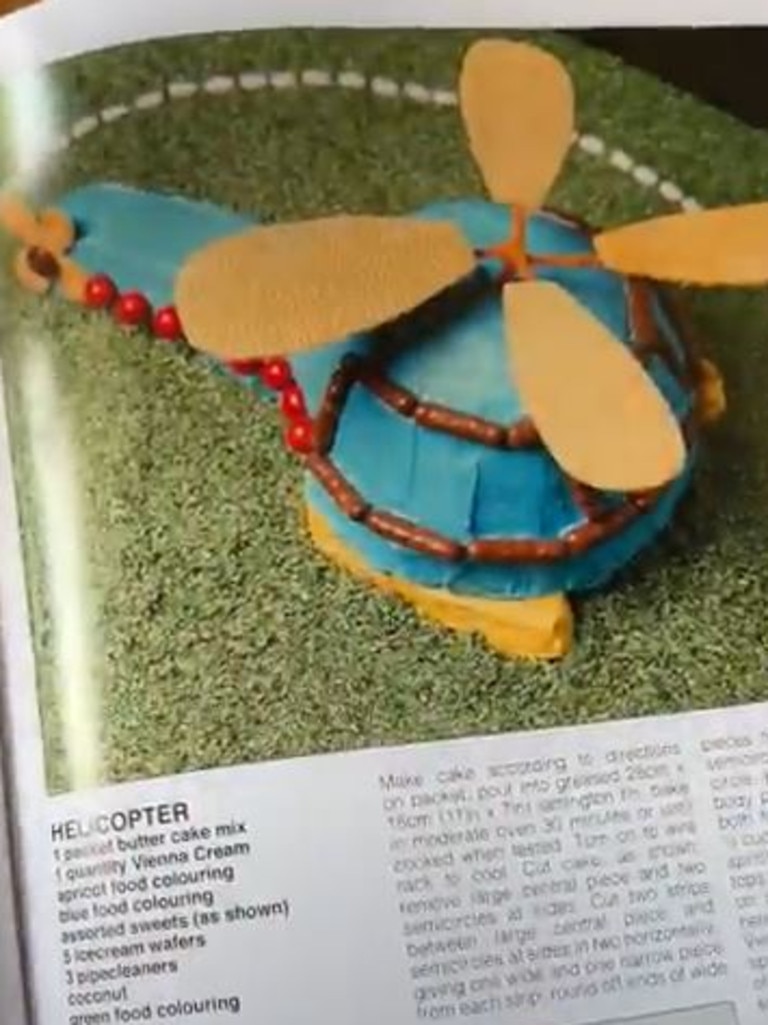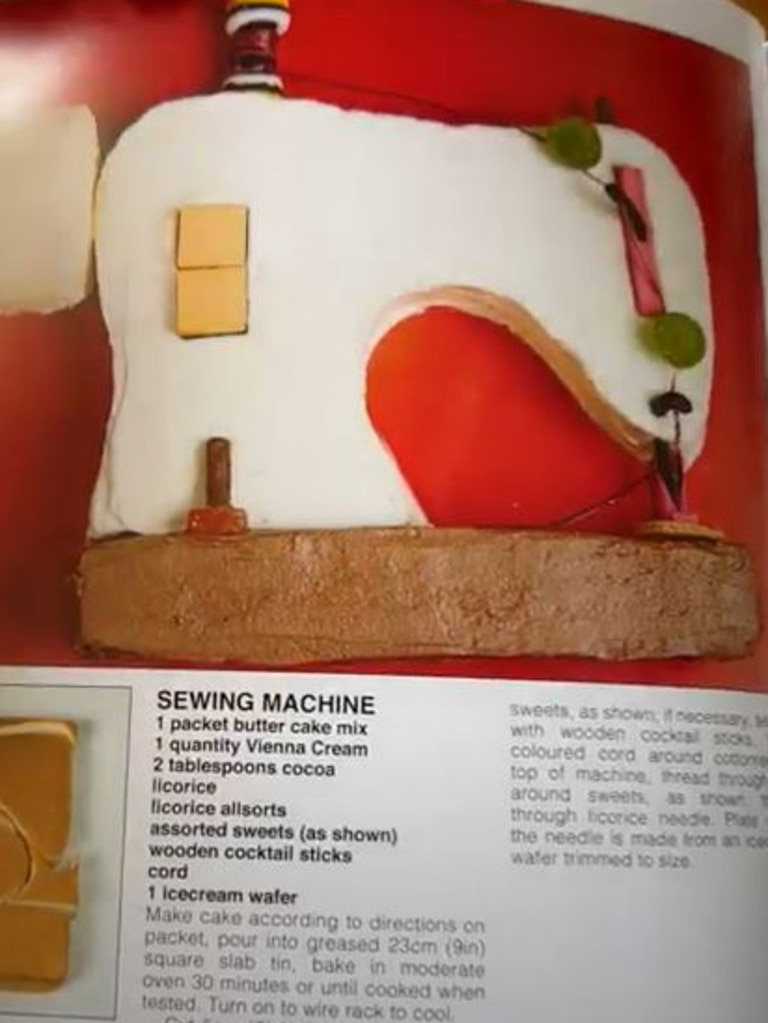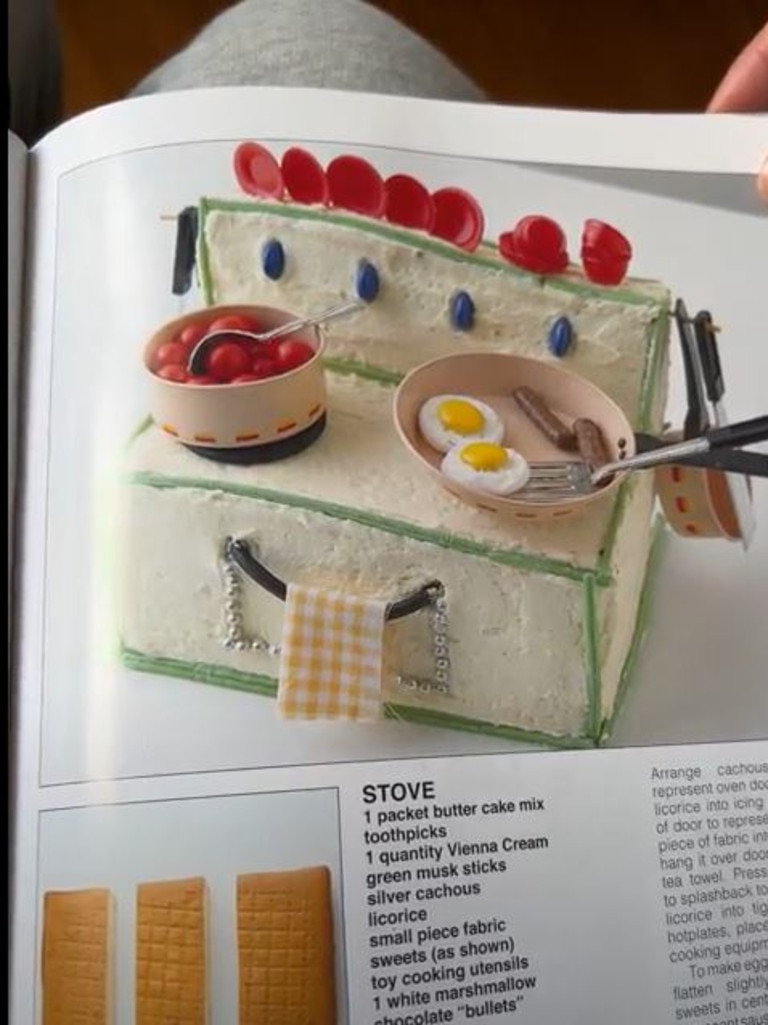Detail in classic Aussie cookbook from the 80s causes a stir
It’s a book almost every kid in the 80s and 90s knew and loved – but Aussies in 2023 have noticed a few details that they aren’t too happy about.
If you grew up in Australia in the 80s or 90s, then it is highly likely that birthdays consisted of pulling out the classic Women’s Weekly cake book and telling your parents which creation you wanted this year.
You might ask for the race car track, or the butterfly, or, if you were extra lucky, your parent might try their hand at the iconic swimming pool or the duck with chips for a beak.
While the cakes contained in the Women’s Weekly Children’s Birthday Cake Book are undoubtedly iconic and the source of many good memories for countless Aussies, looking at some the suggested recipes today may raise a few eyebrows.
The book was first published in 1980 and has sold more than half a million copies. Due to its popularity, the company decided to reprint it 30 years later, branding it the “vintage edition”.

And, while cakes we know and love still grace the pages, there are those that couldn’t help but notice the stark divide in the options for boys and girls.
The ‘boys’ section is filled with things like pirates, helicopters, trains and trucks, while the ‘girls’ pages have a few more questionable inclusions relating to domestic chores, such as a sewing machine, sewing basket and stove top.
While the reprinted edition has hundreds of glowing five star reviews, more than a few Aussies couldn’t help but notice the some of the “outdated” stereotypes.
“The cake designs very sexist to the modern eye – sports cars, rockets and tug boats for boys and sewing machines, stoves and tea parties for girls,” one review read.
“This cake book is so out of date. It is also very sexist which was typical from that era,” another person noted.


One wrote: “An oldie but a goodie? Maybe not. Very gendered and sexist. If you don’t want your kid to grow up thinking that there are girl cakes and boy cakes, give it a miss.”
However, they did add that the photos were “pleasing” and the cake designs were not overly polished so they look “totally achievable”.
Even members of a Facebook group dedicated to fans of the book have pointed out the gender divide.
“Was anyone else amused when they looked back through the book when they were a bit older to discover that most the ‘cakes for girls’ were domestic stereotypes such as ovens, sewing baskets and sewing machines?” one member asked.
Another revealed that, as a child, her mother wouldn’t make anything she believed was “sexist”, which she claimed “pretty much cancelled out half of the girl cakes”.


It seems the book’s author, Pamela Clark, is aware that not everyone is pleased with the gender divide in the book.
Speaking to the ABC in 2018, she revealed that having a boys and girls section even caused a stir when the book was first published.
“We had a boys section and a girls section. Now we’re talking 1980 here,” Ms Clark said.
“The phone did not stop ringing in the test kitchen with people saying, ‘How dare you segregate boys and girls? How sexist of you’.
“And that was back in the ‘80s.”
Psychologist Carly Dober told news.com.au that the history of gender “appropriateness” for children is interesting to look back on.
“Not many people know that historically pink was considered to be a colour for boys and not girls, however this changed decades ago and still remains largely the same today,” she said.
“Evaluating the kind of toys young children and their parents were marketed to that were attempting to enforce very traditional gender roles is quite confronting when you look at these photos.”
Ms Dober said the photos in the cookbook show that the roles clearly defined for female children at the time were that of a homemaker.
More Coverage
“Boys on the other hand were expected to engage in all forms of rough work that included noise, smashing things and being tough, without a baby doll in sight,” she said.
“Decades of research and mental health and wellbeing policies later, we know that allowing children freedom to explore the world in their own way is far more enriching for their overall development.
“Not only that, many parents now remember missing out on some of the fun toys that they were ‘not supposed to play with’ and do not want to have young children now experience missing out on all forms of play.”






